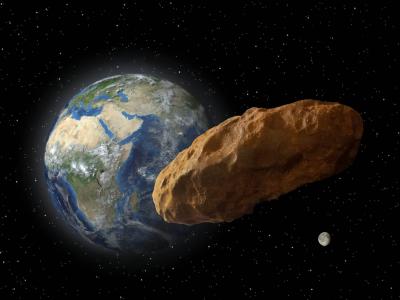An asteroid discovered by NASA on April 9 passed near Earth on April 11, and fortunately, this close approach posed no threat to life on Earth. The asteroid, named 2024 GJ2, is roughly the size of a car. Since its discovery earlier this week, astronomers predicted that the space rock would come within 12,000 miles (19,300 kilometers) of Earth at its closest point, which is only 3% of the distance between Earth and the Moon. This makes 2024 GJ2 one of the closest asteroids recorded to have passed by Earth.
Despite the close encounter, there was no cause for concern regarding potential damage to the planet, as it was not on a collision course with Earth. The length of 2024 GJ2 ranges between 2.5 and 5 meters (8.2 to 16 feet), according to the European Space Agency (ESA). This means it is a small asteroid that could have burned up in Earth's atmosphere had its orbit crossed more directly with ours.
Astronomers believe the asteroid came closest to Earth at 2:28:42 PM EDT (18:28:42 GMT) on Thursday, at a distance of 7,641 miles (12,298 kilometers). The next close flyby of 2024 GJ2 from Earth will not occur until 2093, according to the Near Earth Object Coordination Center of the ESA. When that happens, the asteroid will not come as close as it did on Thursday. Estimates suggest that the approach in 2093 will be at a distance of up to 127,970 miles (205,947 kilometers), ten times farther than its closest approach this past Thursday, and just over half the distance between Earth and the Moon.




